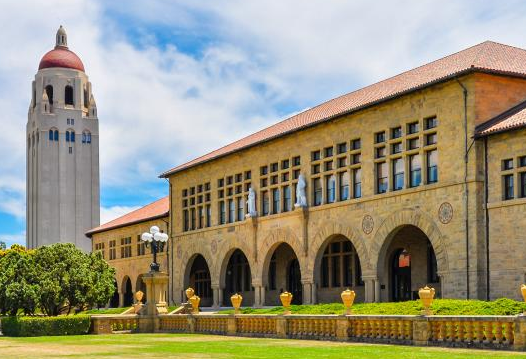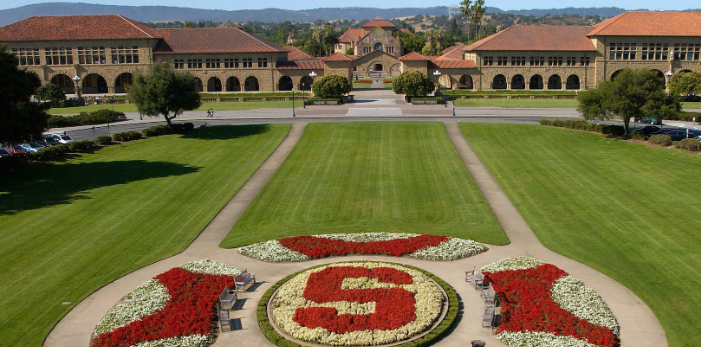Introduction
Stanford University, nestled in the heart of Silicon Valley, California, is one of the world’s leading research universities. Founded in 1885 by railroad magnate Leland Stanford and his wife, Jane Lathrop Stanford, in memory of their only child, the institution has grown to embody the ideals of innovation, entrepreneurship, and academic excellence. Today, Stanford stands as a symbol of educational prowess, consistently ranking among the top universities globally.
Historical Background
Stanford University was born out of a personal tragedy. Leland and Jane Stanford decided to create an institution of higher learning to honor their son, Leland Stanford Jr., who died of typhoid fever at the age of 15. The Stanfords envisioned a university that would “promote the public welfare by exercising an influence in behalf of humanity and civilization,” and Stanford University was officially opened on October 1, 1891.
From its inception, the university was non-sectarian, coeducational, and aimed at producing a cultured and informed citizenry. The founding grant emphasized teaching and research in the sciences and humanities, aligning with the broader ambitions of American society at the time. The university has since evolved, becoming a crucible for innovation and leadership in various fields.
Campus and Architecture
The Stanford campus, known for its breathtaking beauty and vast expanse, spans over 8,180 acres, making it one of the largest in the United States. The university is designed in a distinctive style, blending Romanesque and Mission Revival architecture. The Main Quadrangle, with its sandstone buildings and red-tiled roofs, is iconic and reflects the university’s early architectural vision.
At the heart of the campus lies the Stanford Memorial Church, a nondenominational place of worship that symbolizes the university’s commitment to moral and spiritual development. The campus also features world-class facilities, including the Hoover Tower, the Cantor Arts Center, and the Bing Concert Hall, each contributing to the university’s vibrant cultural life.
Academic Excellence
Stanford University’s commitment to academic excellence is evident in its rigorous admissions process, outstanding faculty, and cutting-edge research. The university is home to seven schools: Humanities and Sciences, Engineering, Earth, Energy & Environmental Sciences, Education, Law, Medicine, and Business. These schools offer a wide range of undergraduate, graduate, and professional programs.
Stanford’s faculty includes numerous Nobel laureates, Pulitzer Prize winners, and members of prestigious academies. The university’s emphasis on interdisciplinary collaboration has led to groundbreaking research in fields such as artificial intelligence, biotechnology, and environmental science. For instance, Stanford’s Artificial Intelligence Laboratory has been at the forefront of AI research for decades, contributing significantly to the development of technologies that have transformed industries worldwide.
Research and Innovation
Research is at the core of Stanford’s mission. The university is renowned for its pioneering work in a variety of fields, including computer science, engineering, medicine, and the humanities. The Stanford Linear Accelerator Center (SLAC), established in 1962, is a testament to the university’s leadership in scientific research. SLAC has been instrumental in advancing our understanding of particle physics and has produced numerous Nobel Prize-winning discoveries.
Stanford’s close proximity to Silicon Valley has fostered a unique environment of innovation and entrepreneurship. The university has played a pivotal role in the development of the technology industry, with many of its alumni founding or leading major tech companies such as Google, Hewlett-Packard, and Netflix. The Stanford Research Park, established in 1951, was one of the first university-affiliated business incubators and has been instrumental in driving the region’s technological boom.
The university also supports entrepreneurial initiatives through programs like StartX, a nonprofit startup accelerator for Stanford-affiliated entrepreneurs, and the Stanford Technology Ventures Program, which provides resources and education for students interested in entrepreneurship. These programs have helped to cultivate a spirit of innovation among students and faculty, contributing to the creation of countless startups and groundbreaking technologies.

Social Impact and Global Reach
Stanford University’s influence extends far beyond the confines of its campus. The university is committed to addressing global challenges and making a positive impact on society. Through initiatives like the Stanford Center on Poverty and Inequality, the Freeman Spogli Institute for International Studies, and the Stanford Woods Institute for the Environment, the university tackles issues ranging from social inequality to climate change.
Stanford’s global reach is also reflected in its diverse student body, with students from over 90 countries. The university’s international programs and partnerships foster cross-cultural understanding and collaboration, preparing students to become global citizens and leaders. Stanford’s Bing Overseas Studies Program offers students the opportunity to study in locations around the world, including Cape Town, Florence, and Kyoto, enriching their academic experience and broadening their perspectives.
The university also has a strong commitment to public service, encouraging students to engage in community service and apply their knowledge to address societal challenges. The Haas Center for Public Service is a hub for service and social innovation at Stanford, offering resources, fellowships, and programs that enable students to make a meaningful difference in the world.
Athletics and Extracurriculars
Stanford University is also known for its athletic prowess, with one of the most successful collegiate sports programs in the United States. The university’s athletic teams, known as the Stanford Cardinal, have won numerous national championships and produced many Olympic athletes. The university offers a wide range of varsity, club, and intramural sports, providing students with opportunities to compete at all levels.
Beyond athletics, Stanford boasts a vibrant extracurricular scene, with over 600 student organizations covering a wide range of interests, from the arts and culture to science and technology. These organizations provide students with opportunities to develop leadership skills, explore new interests, and connect with peers who share similar passions. The university’s commitment to student life is also evident in its residential system, which fosters a sense of community and belonging among students.

Challenges and Criticisms
Despite its many achievements, Stanford University is not without its challenges and criticisms. The university has faced scrutiny over issues such as the high cost of tuition, lack of diversity, and its handling of sexual assault cases. In recent years, Stanford has taken steps to address these concerns, implementing policies to increase financial aid, promote diversity and inclusion, and improve campus safety.
The university’s close ties to Silicon Valley have also raised questions about the influence of the tech industry on academic research and the ethical implications of emerging technologies. As Stanford continues to navigate these complex issues, it must balance its commitment to academic freedom and innovation with its responsibility to uphold ethical standards and address societal concerns.
The Future of Stanford University
Looking to the future, Stanford University is poised to continue its legacy of excellence and innovation. The university’s strategic plan, launched in 2018, outlines a vision for the future that emphasizes interdisciplinary collaboration, inclusivity, and a commitment to addressing global challenges. Key initiatives include the Stanford Impact Labs, which bring together researchers, students, and external partners to tackle pressing social issues, and the Long-Range Vision for Sustainability, which aims to make Stanford a leader in sustainability and environmental stewardship.
Stanford is also expanding its global presence, with initiatives like the Stanford Global Studies Division and partnerships with universities and research institutions around the world. These efforts reflect the university’s commitment to fostering global collaboration and addressing the complex challenges facing our world.
Conclusion
Stanford University stands as a beacon of innovation, academic excellence, and social impact. From its humble beginnings as a memorial to a young boy, it has grown into one of the world’s most prestigious institutions of higher learning. Stanford’s commitment to pushing the boundaries of knowledge, fostering a spirit of entrepreneurship, and addressing global challenges has solidified its place as a leader in education and research.
As Stanford continues to evolve and adapt to the changing needs of society, it remains dedicated to its founding principles of promoting the public welfare and advancing the frontiers of knowledge. With its rich history, vibrant campus life, and unwavering commitment to excellence, Stanford University will undoubtedly continue to shape the future of education and innovation for generations to come.




